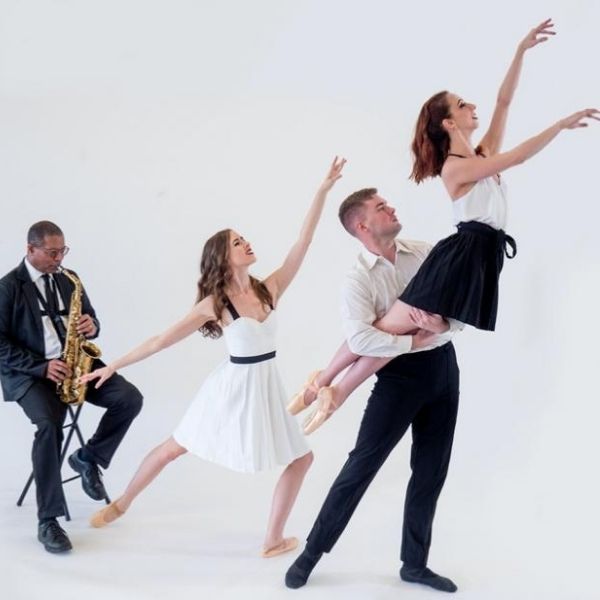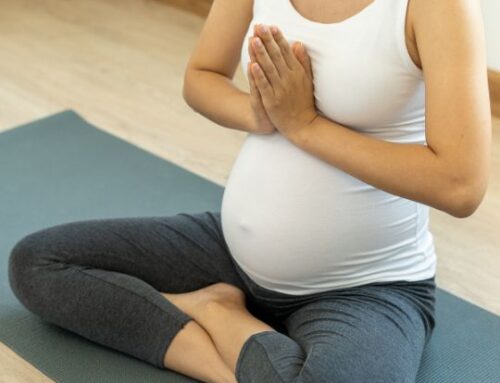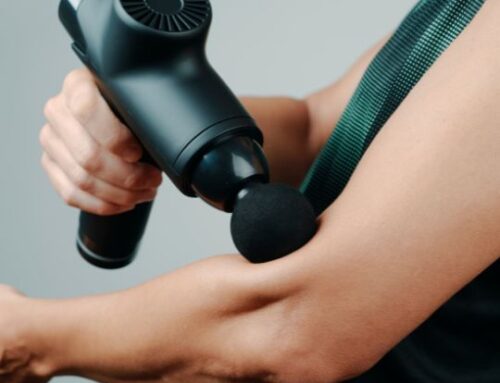Welcome back to the Dancer Blog! This week we’re going to be discussing partnering in dance. Specifically, how to partner. Growing up in dance I was pretty lucky. My studio actually had a number of male dancers, as many as 9 at one point, so partnering was a structured part of my training. It was around middle school, for me, when my studio started offering weekly partnering classes. During these classes we would learn different lifts and maneuvers common in ballet as well as other styles of dance. It was a great learning opportunity as it also taught me the communication skills needed to work with my dance partner in order to figure out what each of us needed to do to make the lifts work.
I remember this was also around this time that my gym class started offering classes in the weight room. Weight training twice a week meant that a lot of my classmates would ask each other “what do you lift?” At this age I was pretty snarky and regularly responded with “I lift people.” My friends knew that I was a dancer and most thought the response funny. Inevitably though, I’d get classmates who would say something like “that’s not lifting.” to which I would respond “No, it’s harder!”
Thinking back, I was actually pretty spot on with my thinking even if I didn’t really understand why yet. Yes, lifting people is more challenging than lifting weights. Weights just sit there and weigh whatever they weigh. People on the other hand adjust and change positions while you lift them. This changes the downward force that is applied to the lifter’s body as they lift. This means that while partnering, the person you’re lifting rarely “weighs” the same throughout the entire maneuver. This creates a lot of additional challenges for the lifter. In fact, what this ultimately requires, is a completely different approach to how we lift.
So what do I mean by this? Well if you’ve ever worked with a personal trainer or spent any time weight training then you’ll know that, when lifting weights, you never want to lock your joints into extended positions. I’m excluding powerlifting here. Rather you want to let the muscles do the work so that they can gain the benefit from the work out. This is because when we lift weights we are trying to build strength by stressing our muscles. This is very different from our goals in dance when we partner.
In dance, partnering is a function of choreographic expression. The goal isn’t to increase strength but rather, to create an aerial design or moving shape that tells a story. So why would this change our approach to lifting? If you approach partnering like you would a weight, two things are going to happen. One, rapidly fluctuating amounts of force are going to be sent into your muscles. This is because, as I mentioned before, dancers are not inanimate objects. This makes it harder for the lifter to match the energy needed to steadily hold their partner in place.
Imagine trying to hold an apple directly in front of you at chest level, only the apple is changing from 2 lbs to 10 lbs and back again randomly. Meanwhile you need to hold the apple steady at chest level. Trying to do this with brute strength alone would rapidly fatigue your muscles.
Secondly, depending on the lift you’re attempting, you may very well be trying to suspend a dancer in the air and hold them there for a prolonged period of time. I’m talking about présage lifts specifically but they’re not the only ones that call for this. In this instance you would be applying those same fluctuating forces through your muscles, only now it would be compounded over a prolonged period of time. Now imagine doing this over and over again throughout a three hour long production. This is not a healthy nor sustainable approach to partnering!
So how DO dancers lift? Well like with most things we’ve talked about on the Dancer Blog, when it comes to dance, invert it. That’s right, when partnering, the proper technique is to align your bones and lock your joints in order to create a semi rigid base that the lift can then rest on. This is not dissimilar to powerlifting.
But Dr. James isn’t that bad for your joints? Well, the answer is actually yes and… yeah technically BUT it can be mitigated. Hear me out, in my first two blog posts I discussed how a dancer’s biomechanics are different from a “normal” person’s biomechanics (Check out Part 1 and Part 2 here.) The reality is, some of the biomechanics that make dance aesthetically appealing, that is to say creates the beautiful lines and designs that we strive for, are not always healthy for the human body. This is the sacrifice that all athletes make when they pursue a career in their craft. But that’s not to say that there aren’t ways we can make it MORE healthy.
Let’s consider again the présage lift. This is a lift where we suspend our partner directly overhead and hold them in that position for some period of time. This can be done two handed or one handed. Unless you’re Superman, I promise you, you are not physically strong enough to lift a human being over your head with one arm and hold them there with just the strength of your muscles. In order to accomplish this lift, you have to work with your partner and utilize physics to your benefit. By timing your partners jump with your upward lift, you minimize the downward force your partner puts on your muscles. This allows enough time for the lifter to straighten and then lock their wrist, elbows, shoulders and back. Doing this takes the pressure off of the muscles and transfers them to the bones and joints.
Bones are built to withstand forces, especially forces that travel down the length of the bone. Additionally, joints come with build in shock absorbers. For the spine that’s our intervertebral discs. Understand, there exists no lift in dance that does not utilize the spine as a key stone. This is intentional as the spine allows for a lot of stability and weight barring.
So what role do muscles play in partnering? The support role! I don’t want to mislead, muscles are critical for healthy partnering. They’re just not the stars. Muscles are vital in generating the initial explosion of energy needed to start a lift. Then, after the bones and joints create the frame, the muscles function to support that frame. That’s because as we discussed in my Flexibility and Strength blog, muscles create stability.
Look at the picture above. Even though this is not a présage lift, we can still see the frame and support systems at play. Our male dancer has aligned his supporting leg, pelvis and low back so as to create a sturdy base that the lift can rest on. We can also see how his shoulders are pressed down to support the carriage position of his arms. This is the frame that allows him to hold his partner over a period of time while sparing his muscles the brunt of the force. This allows the muscles to play the support role. By engaging his lumbar erectors, abdominals, glutes and hip flexors, our male dancer is able to increase the stability and strength of the frame. This, in turn, takes some of the weight barring off of the joints.
This is a perfect example of healthy partnering. We are accomplishing our goals from a choreographic stand point while also minimizing the risk of injury to the dancer’s body. Like strength and flexibility, it’s a balancing act. One without the other opens the dancer up to a number of injuries.
Speaking of this picture, this week’s shout out goes to (from left to right) Ken Scott, Kayleigh Danowski, David Morton and Jesssie Tidquist. Ken is on faculty with the Eastman School of Music and Kayleigh, David and Jesssie are company members with the New York State Ballet. This photo is from their production “Dancing with Duke Ellington. We’ve featured the company on the Dancer Blog before so make sure to go and check them out. They’re a great company with a lot of passionate dancers from around the country and the world. Plus, they’re located right here in Fairport.
We’ve covered a lot this week in regards to the biomechanics of partnering. Next week we’ll be continuing the topic by discussing common partnering injuries and how a dancer’s injury can tell you everything you need to know about they’re approach to partnering and where their weaknesses are.
Last thing, I’m really hoping to grow this dance community here at Pinnacle Hill Chiropractic into something special and that means interacting with my readers! So if you have any questions or topics you would like me to address here on the Dancer Blog comment below and let me know! Also if you want to help this community grow faster, please like and share this blog on Facebook, Instagram, and Twitter. Until next time!





